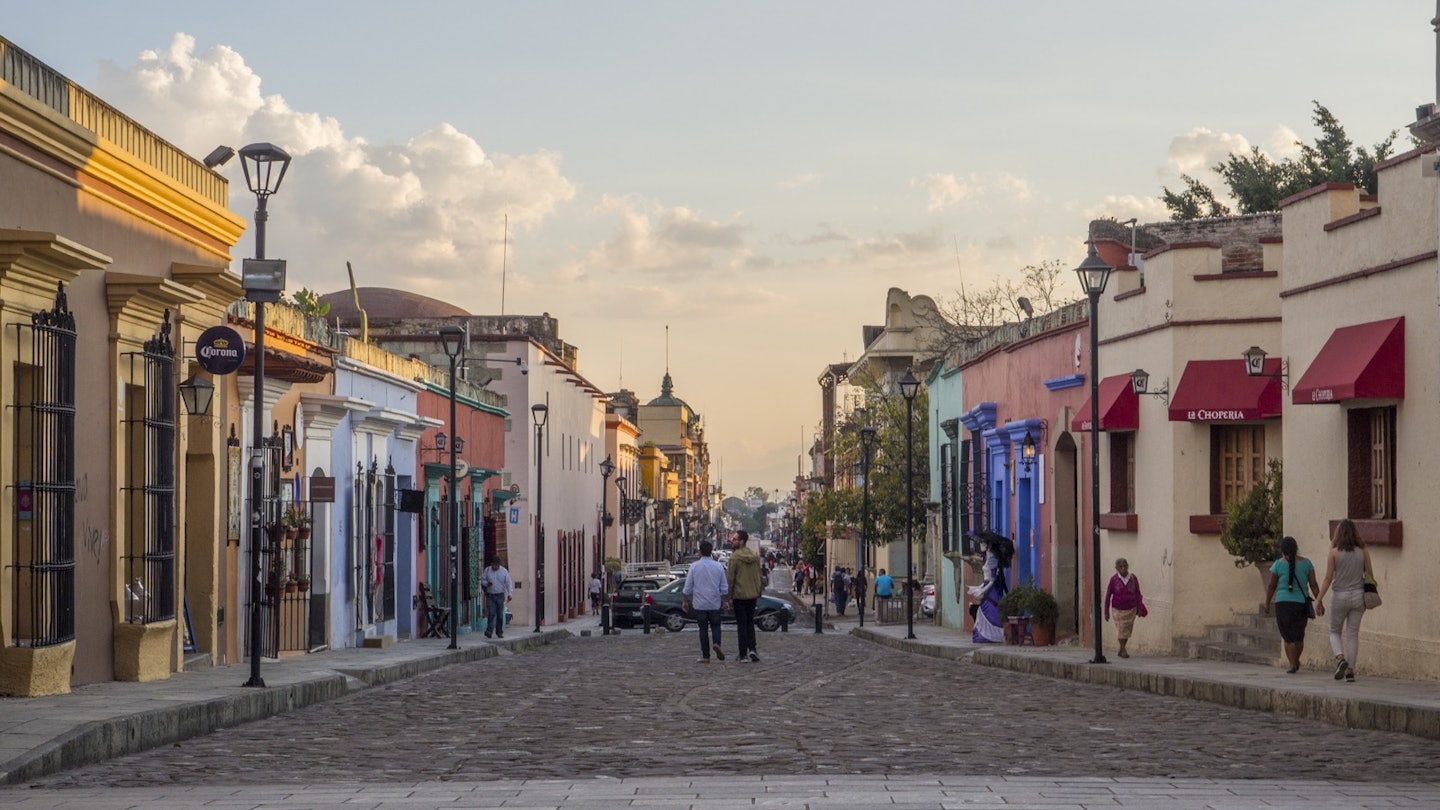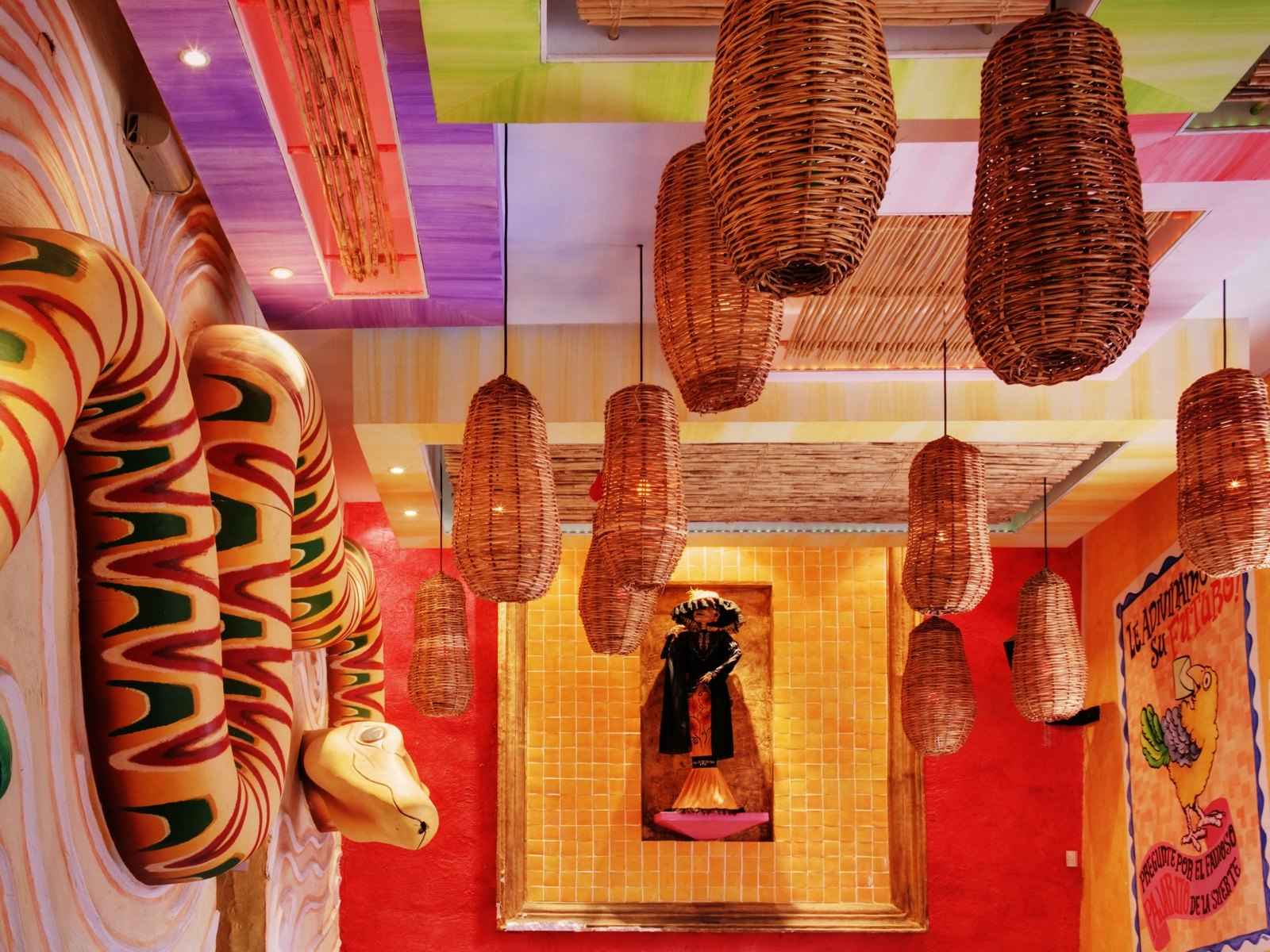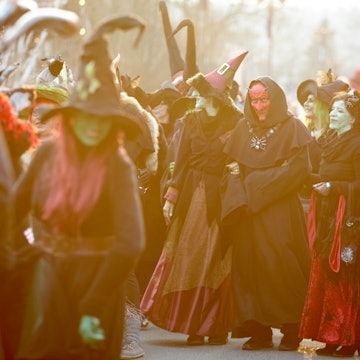

Oaxaca is one of the most LGBTIQ-friendly states in Mexico © Melissa Kuhnell
Small-town Mexico may not come immediately to mind when you think of a queer traveller’s paradise, but throughout Oaxaca the beach villages and city streets offer both queer history and modern hotspots.

Any hotels, bars, or restaurants popular with tourists are likely to be gay-friendly, but like many other places around the world, visibly gay, trans, or gender-nonconforming people could face bigotry just about anywhere. Although the Mexican constitution prohibits discrimination based on sexual orientation, violence against LGBTIQ people is not uncommon.
LGBTIQ history
While LGBTIQ people played major roles in indigenous communities prior to colonization, few sources give us an unbiased view of these cultures without Spanish influence. During the colonial period, homosexuality was illegal and many were killed for behaviors and identities which the Spanish and the Catholic Church demonized and criminalized. This violence continued long after the revolution, even though independence legalized private homosexual acts. But across the country, LGBTIQ people have been fighting for their rights, and progress has been made.

Same-sex marriage was legalized in Mexico City in 2009, and twelve other states have followed suit. Legislation is pending everywhere else in the country.
It was the fight for same-sex marriage in Oaxaca that opened the door to the country-wide wave of legislation. Currently the granting of civil marriage certificates to same-sex couples in Oaxaca is decided on a case-by-case basis.
Similarly, transgender rights are not universally recognized. In Oaxaca, however, there is a long history of gender-nonconformity in indigenous communities. Third-gender people, women who were assigned male at birth, hold an esteemed position in places like Juchitán de Zaragoza.
There is also a long history of unique roles in the community for two-spirit people, typically a gender assigned to intersex babies.
Oaxaca has a particularly interesting indigenous history, because the Zapotec people, unlike the Maya and Mexica (Aztec), didn’t develop a community centered on conquest. The culture, and ideas of masculinity, are largely centered around ideals relating to art, craft, music, dance, ordeal, and education. You may see this in the vibrant arts scene in Oaxaca City, or the celebration of queer and trans lives along the coast.

In Oaxaca City
The capital of Oaxaca State has a large LGBTQ community, as evidenced by the large crowd of people who march every year in the city’s Pride parade. There are three main gay bars in the city with very different scenes.
La Envidia is the classic dive bar in the city, and not much of a tourist hangout. Don’t go expecting fancy cocktails or seats on the toilets. But if you have friends in Oaxaca’s LGBTQ community, you should round up a few to spend a night drinking beer and mezcal.

The most popular nightclub for Oaxaca’s queer community, Club 502, is also known as just “The Number” and it is the place to go for mixed drinks and dance tunes. Like most clubs in the city, things get started late here. Don’t expect a crowd until after midnight on Friday and Saturday night.
For male dance revue, head to La Costa Nightclub. While women are tolerated here (as well as at clubs with female exotic dancers) this club is definitely made for the men.
On the Coast
The difference between Oaxaca’s coast and its capital is stunning, and not just in the endless changes in climate zones on the seven-hour drive. Zipolite in particular has been known as a prime destination for queer tourists for decades, and Juchitán de Zaragoza has a long indigenous history of queer and trans inclusivity in the community.

Zipolite
At the west end of the beach in Zipolite, Playa Roca Blanca is the most accessible gathering place for singles, couples, and groups alike. Naked sunbathing is acceptable along the entire beach, but this is a favorite hangout for folks staying between Shambhala and Hotel Nude.
If you head over to Playa del Amor, venture up the cliffs to Vista del Amor, a small bar with an incredible lookout. The beach down below, aka the beach of love, is also clothing optional and a popular gay hangout spot.
While Hotel Nude is a higher end option on the beach’s west end, on the other side near Playa del Amor, the Hotel Neptuno proudly displays the rainbow flag at its entrance, celebrating their long history of welcoming Mexico’s queer community and international LGBTQ travelers.
Restaurants and bars in the area are very welcoming, and several are LGBTQ-owned. Check out Cafe Orale for a great breakfast off the beach, or just a quick garden coffee break. If you are looking for an apartment, Heven is a bit of an uphill walk from Playa Roca Blanca, but it is absolutely worth it for the view.

Juchitán de Zargoza
The small city of Juchítan de Zargoza, is a few kilometers inland from the coast, but it is absolutely worth a visit. Populated by both Zapotec and Huave peoples, this area has the lowest rates of violence against LGBTQ people in the state.
The strong indigenous culture, which is particularly celebratory when it comes to queer and trans folk, with third-gender muxe people holding a special place in the community. Here, women hold roles in both finance and politics, while men tend to be responsible for agriculture, arts, and crafts. It is considered an honor to have a muxe person in your family.
The town celebrates dozens of velas every year, including one specifically honoring the muxe members of the community. These rituals and celebrations honor various saints and major trades in the town. The word vela means candle, and it fits, because these parties last all night long, with feasting, dancing, and plenty of mezcal. If you want to join in, dress up first!
The main vela season is April and May, but there are also two in June, two in August, and two in September. The Muxe Vela happens every November, just as the high season is starting to warm up for winter on the coast.
















